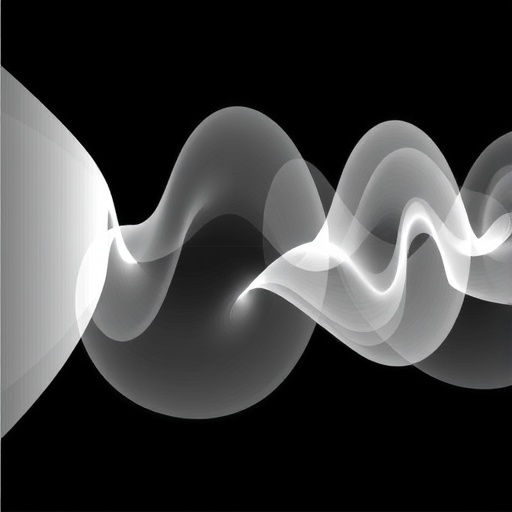In the ever-evolving landscape of electromagnetic field manipulation, recent advances have opened unprecedented pathways to controlling waves with extraordinary precision, offering profound implications across communication technologies, imaging systems, and even quantum information processing. A groundbreaking study by Du, Zhao, Guo, and colleagues, slated for publication in Communications Engineering in 2025, unveils a novel methodology termed the continuous spatio-temporal synthesis of electromagnetic fields, achieved through a projected space-time Fourier transform. This pioneering approach presents a paradigm shift in how electromagnetic fields can be generated and modulated, promising enhanced versatility and dynamic control beyond the limits of traditional methods.
At the heart of this new technique lies the mathematical construct of the Fourier transform, a fundamental tool that decomposes signals into their frequency components. While the spatial Fourier transform enables wavefront manipulation by influencing directionality and phase, temporal Fourier transform addresses frequency content and timing. The innovation here extends to a joint space-time Fourier domain, capturing the intrinsic correlations between spatial positions and temporal dynamics. By projecting electromagnetic field components into this higher-dimensional domain, the method facilitates continuous, seamless synthesis of electromagnetic wave patterns with exacting control of spatio-temporal characteristics.
.adsslot_ImDaUBb4sq{ width:728px !important; height:90px !important; }
@media (max-width:1199px) { .adsslot_ImDaUBb4sq{ width:468px !important; height:60px !important; } }
@media (max-width:767px) { .adsslot_ImDaUBb4sq{ width:320px !important; height:50px !important; } }
ADVERTISEMENT
Delving deeper into the physical implementation, the team crafted a framework that maps desired electromagnetic field configurations in the continuous joint space-time frequency domain back to their realizable forms in physical space and time. This involves calculating inverse projected space-time Fourier transforms that translate complex wave patterns into actionable input signals or modulator settings. The ability to theoretically design and practically generate electromagnetic fields in this manner surpasses limitations of discretized or segmented approaches, enabling real-time adjustments and highly dynamic waveforms shaped continuously in space and time.
The implications for wireless communication are especially profound. Next-generation wireless networks, including 6G and beyond, require sophisticated beamforming and multiplexing schemes to manage an ever-increasing demand for data and low latency. The continuous spatio-temporal synthesis framework allows for tailor-made electromagnetic field patterns that could dynamically adapt beam shapes and frequencies in real-time, maximizing signal quality and spectral efficiency. This approach could seamlessly blend spatial beamforming with temporal signal modulation, driving innovations in smart antennas and adaptive wireless systems.
Beyond communication, this breakthrough has transformative potential in electromagnetic imaging and sensing technologies. Classical imaging techniques rely on fixed spatial or temporal filters, limiting resolution and adaptability. Continuous spatio-temporal synthesis enables customizable waveforms that can enhance contrast, resolution, and penetration depths in imaging modalities such as radar, terahertz imaging, and medical diagnostics. The method allows precise shaping of wave packets that interact with targets in highly controlled ways, improving detection sensitivity and reducing noise—a critical advantage in complex, cluttered environments.
Quantum information science stands to benefit as well. Quantum systems utilizing electromagnetic fields for qubit control or photon-mediated interactions require exquisitely precise field manipulations. The ability to continuously synthesize fields in joint space-time domains can facilitate optimized entanglement protocols, high-fidelity quantum gate operations, and scalable quantum networks. The approach opens new avenues for sculpting quantum electromagnetic environments, crucial for the stability and controllability of delicate quantum states.
Crucially, the projected space-time Fourier transform approach supports a continuous tuning mechanism, unlike previous methods constrained by discrete steps or approximations. This continuous nature not only grants higher fidelity in field synthesis but also reduces computational overhead during transformations. The research team elaborates on algorithmic implementations that exploit this property for efficient simulations and real-time control, enabling practical adaptation in experimental setups and industrial systems.
Theoretical formulations presented in the study underscore the mathematical elegance and practical feasibility of this method. Employing rigorous vector calculus and electromagnetic boundary conditions, the authors prove the completeness and uniqueness of the continuous spatio-temporal decomposition. This provides a solid foundation for future investigations into non-linear media, multi-frequency interactions, and non-stationary wave phenomena, areas ripe for exploration with this new toolset.
From an experimental standpoint, the authors validate their framework using advanced electromagnetic modulators and spatial light modulators tailored for joint spatio-temporal control. By synthesizing complex waveforms and measuring their respective field distributions, they demonstrated close alignment between theoretical predictions and empirical data. Such validation underscores the robustness and versatility of the approach, ensuring that it can be integrated with cutting-edge hardware implementations.
The study also anticipates exciting possibilities for active metamaterials and programmable photonic devices. These platforms can exploit continuous spatio-temporal synthesis to dynamically reconfigure their electromagnetic responses, opening doors to “smart” materials with tailored wave manipulation capabilities in real-time. This would revolutionize fields such as adaptive camouflage, dynamic holography, and reconfigurable antennas.
Importantly, this advancement aligns well with the trend toward integration of machine learning with electromagnetics. The continuous synthesis framework provides a rich parameter space for optimization algorithms, artificial intelligence controllers, and feedback systems to interact with electromagnetic fields dynamically. Such synergy could enable autonomous wavefield engineering, self-correcting communication links, and intelligent sensing networks with unprecedented performance.
While the potential applications are vast, the study also addresses challenges inherent to continuous spatio-temporal synthesis. These include managing implementation complexity, minimizing losses in physical modulators, and dealing with environmental perturbations that affect wave propagation. The authors propose possible strategies such as hybrid analog-digital modulation schemes and adaptive feedback mechanisms to overcome these hurdles, setting a roadmap for future experimental advancements.
Subject of Research: Continuous spatio-temporal synthesis and control of electromagnetic fields
Article Title: Continuous spatio-temporal synthesis of electromagnetic fields by projected space-time Fourier transform
Article References:
Du, Y., Zhao, D., Guo, C. et al. Continuous spatio-temporal synthesis of electromagnetic fields by projected space-time Fourier transform. Commun Eng 4, 110 (2025). https://doi.org/10.1038/s44172-025-00448-9
Image Credits: AI Generated
Tags: advanced communication technologiescontinuous spatio-temporal electromagnetic fieldsdynamic control of electromagnetic wavesFourier transform in electromagnetic field manipulationimaging systems and quantum information processingimplications for wireless communication and sensing technologiesinnovative techniques in electromagnetic synthesisintegrated spatial and temporal wave manipulationparadigm shift in electromagnetic field generationprojected space-time Fourier transform methodologysimultaneous control of wave propagationunprecedented pathways in wave control





